|
Combining Adversarial and Reinforcement Learning for Video Thumbnail Selection.
We developed a new method for unsupervised video thumbnail selection. The developed network architecture selects video thumbnails based on two criteria: the representativeness and the aesthetic quality of their visual content. Training relies on a combination of adversarial and reinforcement learning. The former is used to train a discriminator, whose goal is to distinguish the original from a reconstructed version of the video based on a small set of candidate thumbnails. The discriminator’s feedback is a measure of the representativeness of the selected thumbnails. This measure is combined with estimates about the aesthetic quality of the thumbnails (made using a SoA Fully Convolutional Network) to form a reward and train the thumbnail selector via reinforcement learning. Experiments on two datasets (OVP and Youtube) show the competitiveness of the proposed method against other SoA approaches. An ablation study with respect to the adopted thumbnail selection criteria documents the importance of considering the aesthetics, and the contribution of this information when used in combination with measures about the representativeness of the visual content.
|
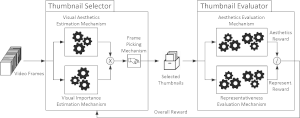
|
|
ObjectGraphs: Using Objects and a Graph Convolutional Network for the Bottom-up Recognition and Explanation of Events in Video.
ObjectGraphs is a novel bottom-up video event recognition and explanation approach. It utilizes a rich frame representation and the relations between objects within each frame. Specifically, following the application of an object detector (OD) on the frames, graphs are used to model the object relations and a graph convolutional network (GCN) is utilized to perform reasoning on the graphs. The resulting object-based frame-level features are then forwarded to a long short-term memory (LSTM) network for video event recognition. Moreover, the weighted in-degrees (WiDs) derived from the graph’s adjacency matrix at frame level are used for identifying the objects that were considered most (or least) salient for event recognition and contributed the most (or least) to the final event recognition decision, thus providing an explanation for the latter. Experimental evaluation shows that the proposed ObjectGraphs method achieves state-ofthe-art performance on the publicly available FCVID and YLI-MED datasets.
|
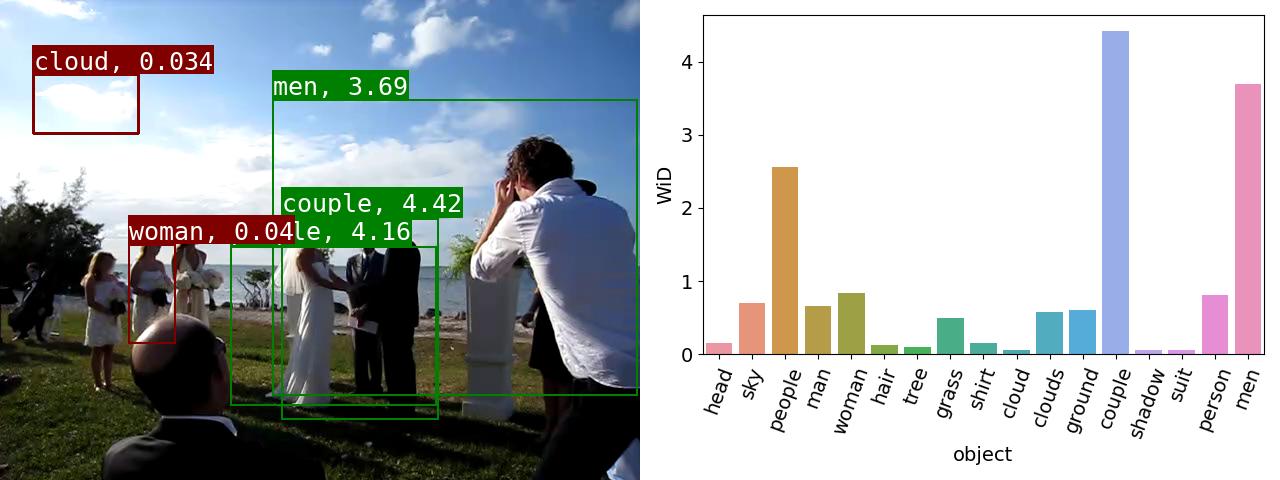
|
|
AC-SUM-GAN: Connecting Actor-Critic and
Generative Adversarial Networks for Unsupervised
Video Summarization.
The proposed architecture embeds an
Actor-Critic model into a Generative Adversarial Network and
formulates the selection of important video fragments (that will
be used to form the summary) as a sequence generation task. The
Actor and the Critic take part in a game that incrementally leads
to the selection of the video key-fragments, and their choices
at each step of the game result in a set of rewards from the
Discriminator. The designed training workflow allows the Actor
and Critic to discover a space of actions and automatically learn
a policy for key-fragment selection. Moreover, the introduced
criterion for choosing the best model after the training ends,
enables the automatic selection of proper values for parameters
of the training process that are not learned from the data (such
as the regularization factor σ). Experimental evaluation on two
benchmark datasets (SumMe and TVSum) demonstrates that the
proposed AC-SUM-GAN model performs consistently well and
gives SoA results in comparison to unsupervised methods, that
are also competitive with respect to supervised methods.
|
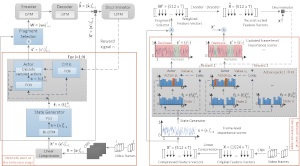
|
|
Structured Pruning of LSTMs via Eigenanalysis and Geometric Median for Mobile
Multimedia and Deep Learning Applications.
A novel structured pruning approach
for learning efficient long short-term memory (LSTM) network
architectures is proposed. More specifically, the eigenvalues
of the covariance matrix associated with the responses of
each LSTM layer are computed and utilized to quantify the
layers’ redundancy and automatically obtain an individual
pruning rate for each layer. Subsequently, a Geometric Median
based (GM-based) criterion is used to identify and prune in a
structured way the most redundant LSTM units, realizing the
pruning rates derived in the previous step. The experimental
evaluation on the Penn Treebank text corpus and the large-scale
YouTube-8M audio-video dataset for the tasks of word-level
prediction and visual concept detection, respectively, shows the
efficacy of the proposed approach.
|
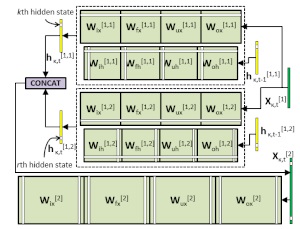
|
|
Performance over Random: A Robust Evaluation Protocol for
Video Summarization Methods.
We propose a new evaluation approach for video summarization algorithms. We start by studying the currently established
evaluation protocol, which quantifies the
agreement between the user-defined and the automatically-created
summaries using F-Score. We
show that the F-Score results typically reported in papers, using a few data splits, are not always congruent with the performance obtained in a larger-scale experiment, and that
the F-Score cannot be used for comparing algorithms evaluated on
different splits. To mitigate these shortcomings we propose
an evaluation protocol that makes estimates about the difficulty
of each used data split and utilizes this information during the
evaluation process. Experiments involving different evaluation settings demonstrate the increased representativeness of performance
results when using the proposed evaluation approach, and the increased reliability of comparisons when the examined methods
have been evaluated on different data splits.
|
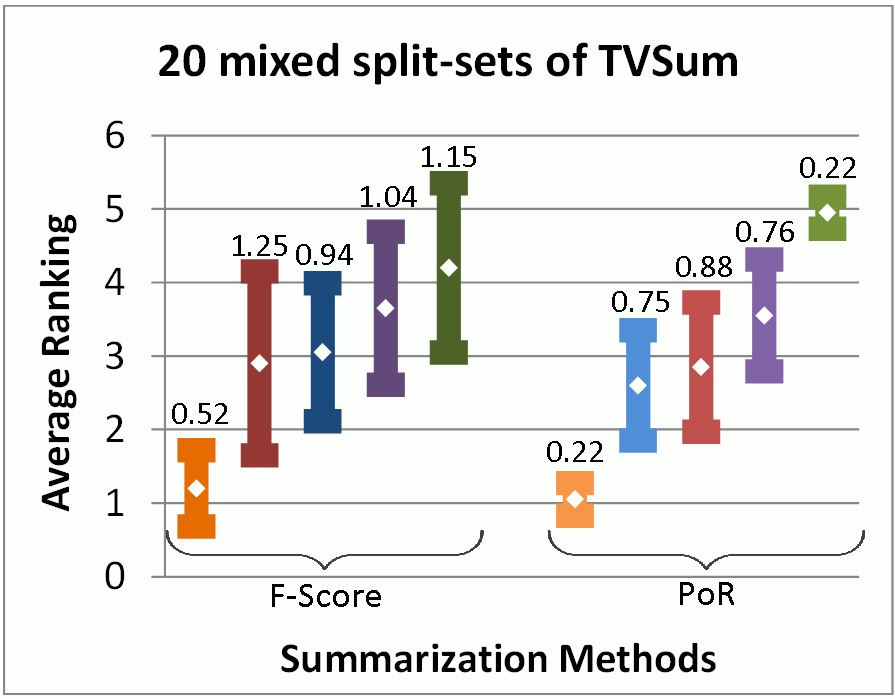
|
|
Attention Mechanisms, Signal Encodings and Fusion Strategies
for Improved Ad-hoc Video Search with Dual Encoding
Networks.
In this paper, the problem of unlabeled video retrieval using textual
queries is addressed. We present an extended dual encoding network which makes use of more than one encodings of the visual and
textual content, as well as two different attention mechanisms. The
latter serve the purpose of highlighting temporal locations in every
modality that can contribute more to effective retrieval. The different encodings of the visual and textual inputs, along with early/late
fusion strategies, are examined for further improving performance.
Experimental evaluations and comparisons with state-of-the-art
methods document the merit of the proposed network.
|

|
|
Fractional Step Discriminant Pruning: A Filter Pruning Framework for Deep Convolutional Neural Networks.
In this paper, a novel pruning framework is introduced to
compress noisy or less discriminant filters in small fractional
steps, in deep convolutional networks. The proposed framework utilizes a class-separability criterion that can exploit effectively the labeling information in annotated training sets.
Additionally, an asymptotic schedule for the pruning rate and
scaling factor is adopted so that the selected filters’ weights
collapse gradually to zero, providing improved robustness.
Experimental results on the CIFAR-10, Google speech commands (GSC) and ImageNet32 (a downsampled version of
ILSVRC-2012) show the efficacy of the proposed approach.
|
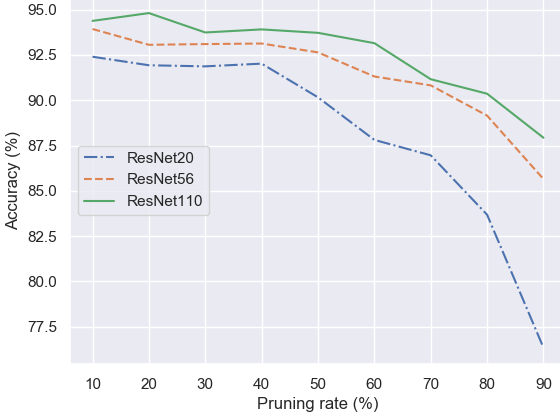
|






